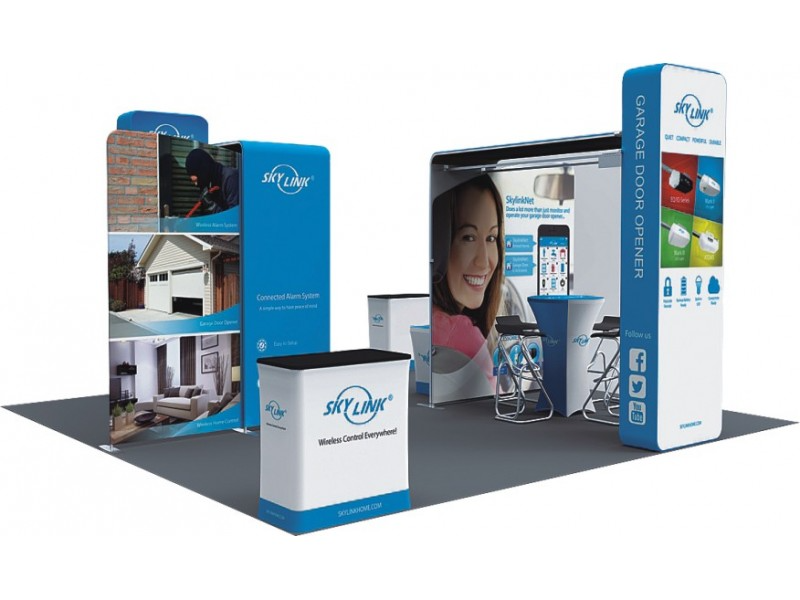A compelling trade show presence starts long before you hit the event floor. It begins with thoughtful trade show booth design and precise manufacturing. Your booth is more than just space; it's an environment that communicates your brand story, attracts visitors, and facilitates connections. Understanding the fundamentals of booth design and the manufacturing process, including the role of trade show booth manufacturers, is key to creating an effective exhibit.
The Importance of Strategic Trade Show Booth Design
Effective custom trade show booth design goes beyond aesthetics; it's about creating a functional and engaging space that meets specific objectives:
- Attract Attention: Stand out visually amidst competitors.
- Communicate Brand: Clearly convey who you are and what you do.
- Facilitate Engagement: Encourage interaction and conversation.
- Showcase Products/Services: Display offerings effectively.
- Generate Leads: Create an environment conducive to capturing information.
Key Principles of Effective Booth Design
- Clear Messaging: Visitors should understand your core message within seconds. Use concise text and strong visuals.
- Strategic Layout: Plan traffic flow. Create distinct zones for demonstrations, meetings, and information. Ensure accessibility.
- Lighting: Use lighting to highlight key areas, products, and graphics. Create ambiance.
- Graphics & Branding: High-quality, high-resolution graphics are essential. Ensure consistent branding (colors, logos, fonts).
- Interactivity: Consider incorporating digital displays, demos, or activities to engage visitors.
- Comfort: If space allows, include seating or a small hospitality area.
- Scalability & Modularity: Can elements of the booth design be reused or reconfigured for different show sizes or layouts?
The Booth Manufacturing Process
Once the design is finalized, manufacturing begins. This involves collaboration between designers and exhibit manufacturers or hardware providers.
- Material Selection: Choosing the right materials impacts look, feel, durability, weight, and cost. This includes framework (metal, wood, modular systems), surfaces (laminates, fabrics, acrylics), flooring, and graphics substrates.
- Structural Engineering: Ensuring the booth is structurally sound, safe, and meets venue regulations.
- Fabrication: Building the components – walls, counters, displays, custom structures. This might be done by custom trade show booth manufacturers for bespoke builds.
- Graphics Production: Printing high-quality graphics on various materials (fabric for backwalls/tents, vinyl, direct-to-substrate). This is where providers specializing in high-quality printing, like Deluxe Canopy for tent and display hardware, play a crucial role.
- Integration: Incorporating lighting, AV equipment, and interactive elements.
- Quality Control & Staging: Assembling the booth pre-show (staging) to ensure everything fits, functions correctly, and meets quality standards.
Choosing Your Manufacturing Partner
Selecting the right trade show booth manufacturers or hardware suppliers is vital.
- Specialization: Do you need a full custom build (requiring custom trade show booth manufacturers) or high-quality modular/portable components (like custom tents, backwalls, counters from specialists like Deluxe Canopy)?
- Quality: Assess their materials, construction techniques, and printing capabilities. Look at portfolios and ask for material samples.
- Collaboration: How well do they work with designers (yours or theirs)?
- Project Management: Can they manage the process efficiently and meet deadlines?
- Budget: Ensure their costs align with your budget, but prioritize quality for key visual elements.
Integrating Hardware Elements
Many effective trade show booth designs incorporate high-quality hardware like:
- Custom Pop-Up Tents: Excellent for defining space, providing overhead branding, especially in island or larger inline booths.
- Fabric Backwalls: Create seamless, vibrant backdrops with dye-sublimation printing.
- Counters & Podiums: Functional elements for reception, demos, or lead capture, often with custom branding.
- Banner Stands: Versatile for targeted messaging or wayfinding within the booth.
Choosing a provider known for durable frames and excellent graphic reproduction for these elements is essential.
Conclusion
Successful trade show exhibiting is built on a foundation of smart trade show booth design and quality manufacturing. By focusing on clear objectives, strategic design principles, and selecting the right exhibit manufacturers or hardware partners, you can create a booth that not only looks impressive but also functions effectively to achieve your event marketing goals. Whether opting for a full custom build or leveraging high-quality modular components, careful planning and execution are paramount.
